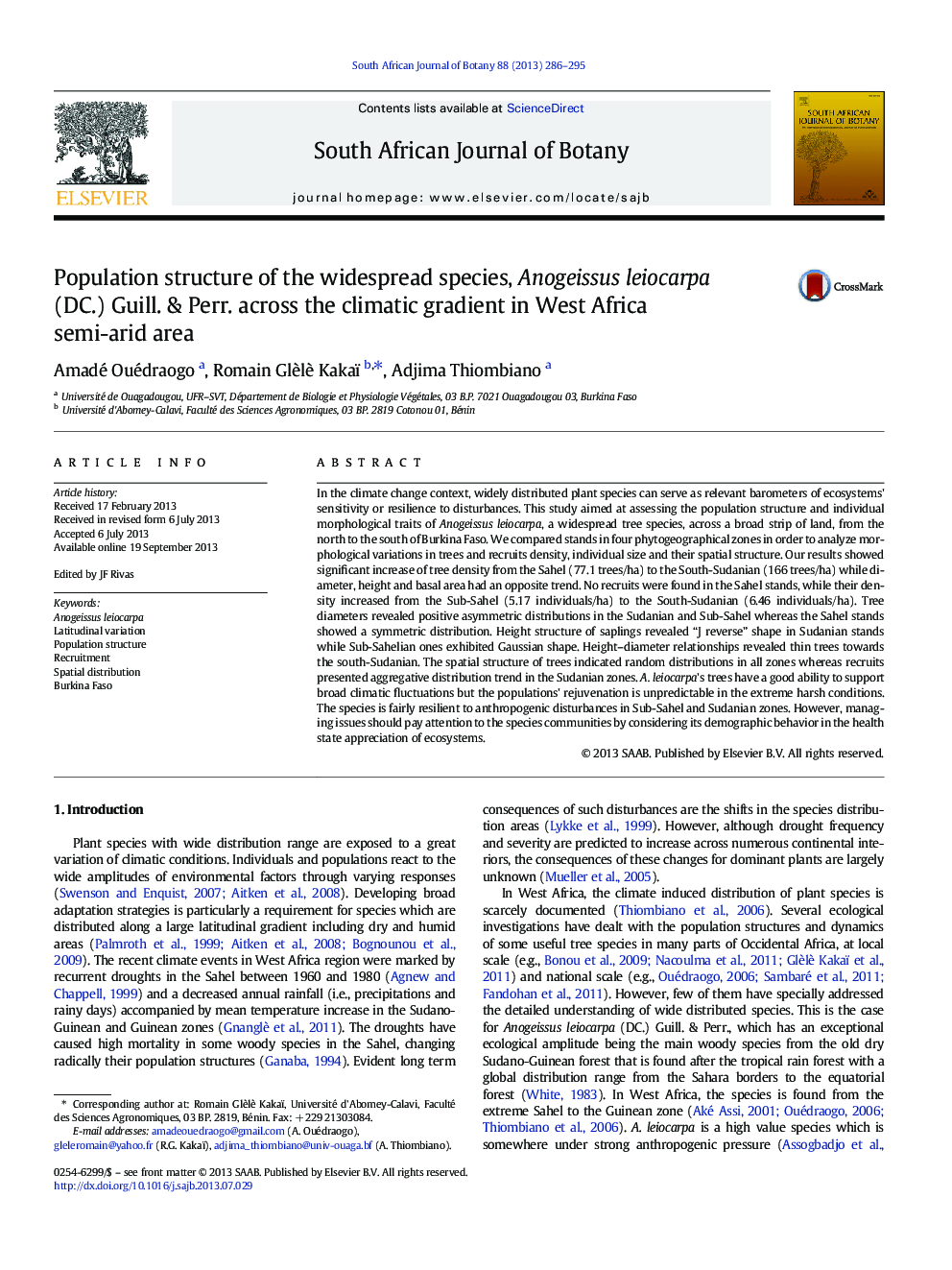| Article ID | Journal | Published Year | Pages | File Type |
|---|---|---|---|---|
| 6379120 | South African Journal of Botany | 2013 | 10 Pages |
Abstract
In the climate change context, widely distributed plant species can serve as relevant barometers of ecosystems' sensitivity or resilience to disturbances. This study aimed at assessing the population structure and individual morphological traits of Anogeissus leiocarpa, a widespread tree species, across a broad strip of land, from the north to the south of Burkina Faso. We compared stands in four phytogeographical zones in order to analyze morphological variations in trees and recruits density, individual size and their spatial structure. Our results showed significant increase of tree density from the Sahel (77.1 trees/ha) to the South-Sudanian (166 trees/ha) while diameter, height and basal area had an opposite trend. No recruits were found in the Sahel stands, while their density increased from the Sub-Sahel (5.17 individuals/ha) to the South-Sudanian (6.46 individuals/ha). Tree diameters revealed positive asymmetric distributions in the Sudanian and Sub-Sahel whereas the Sahel stands showed a symmetric distribution. Height structure of saplings revealed “J reverse” shape in Sudanian stands while Sub-Sahelian ones exhibited Gaussian shape. Height-diameter relationships revealed thin trees towards the south-Sudanian. The spatial structure of trees indicated random distributions in all zones whereas recruits presented aggregative distribution trend in the Sudanian zones. A. leiocarpa's trees have a good ability to support broad climatic fluctuations but the populations' rejuvenation is unpredictable in the extreme harsh conditions. The species is fairly resilient to anthropogenic disturbances in Sub-Sahel and Sudanian zones. However, managing issues should pay attention to the species communities by considering its demographic behavior in the health state appreciation of ecosystems.
Related Topics
Life Sciences
Agricultural and Biological Sciences
Agronomy and Crop Science
Authors
Amadé Ouédraogo, Romain Glèlè Kakaï, Adjima Thiombiano,
